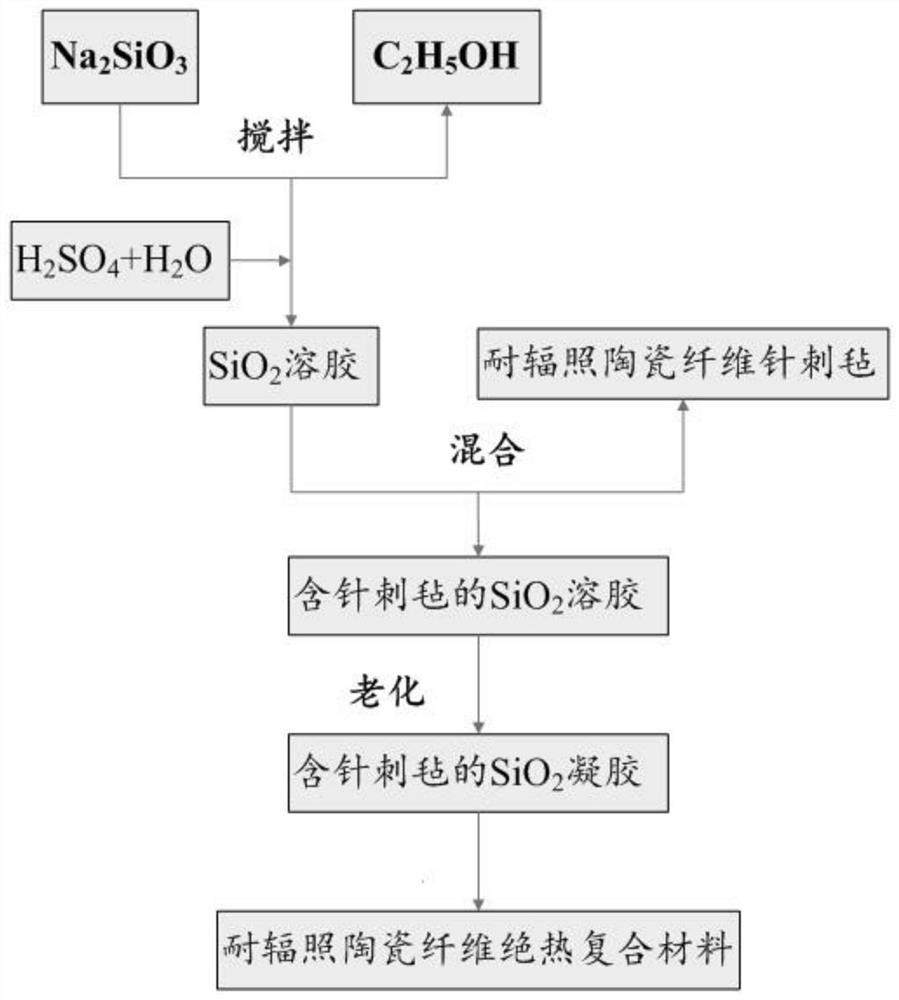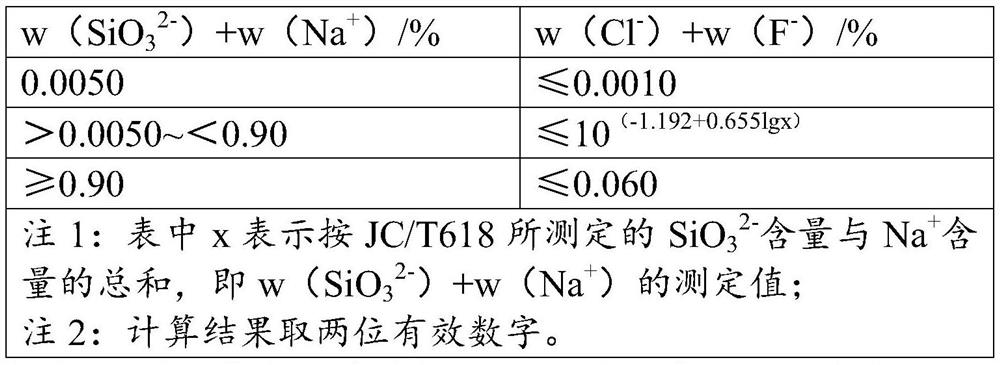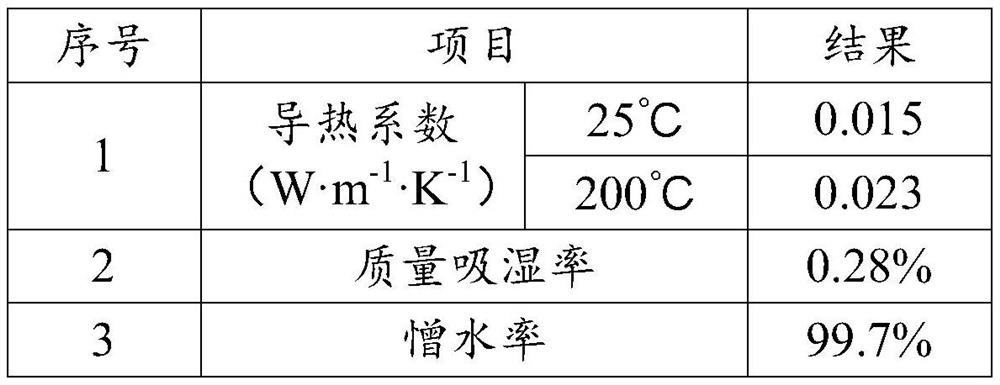A kind of radiation-resistant ceramic fiber thermal insulation composite material and its preparation method
A ceramic fiber and composite material technology, applied in textiles, papermaking, non-woven fabrics, etc., can solve the problems of high hydrophobicity, high thermal conductivity, high corrosion, etc., achieve good neutron radiation resistance and ensure technical performance , to ensure the full effect of
- Summary
- Abstract
- Description
- Claims
- Application Information
AI Technical Summary
Problems solved by technology
Method used
Image
Examples
Embodiment 1
[0039] According to the chemical composition shown in Table 2 below, the radiation-resistant ceramics were fired by the conventional process, and the ceramic fibers were drawn by a general-purpose crucible or pool kiln to form tows with an average diameter of 11 μm. The net and needle punching process form a thickness of 3mm and a bulk density of 108kg / m 3 Radiation-resistant ceramic fiber needle felt.
[0040] Ceramic chemical composition in table 2 embodiment 1
[0041] serial number Element content(%) 1 SiO 2
59.85 2 al 2 o 3
13.12 3 CaO 22.63 4 MgO 2.71 5 Li 2 o
0.023 6 B 2 o 3
0.042
[0042] Take Na 2 SiO 3 as the precursor, C 2 h 5 OH is the solvent, H 2 SO 4 As a catalyst, the C 2 h 5 OH / Na 2 SiO 3 =4 (molar ratio, the same below) Na 2 SiO 3 with C 2 h 5 OH mixed and stirred, adding H to the stirring mixture 2 O / Na 2 SiO 3 = 3.5 deionized water and H 2 SO 4 / Na 2 SiO 3 ...
Embodiment 2
[0047] According to the chemical composition shown in Table 4 below, the radiation-resistant ceramics were fired by the conventional process, and the ceramic fibers were drawn by a general-purpose crucible or pool kiln to form tows with an average diameter of 9 μm. The mesh and needle punching process form a thickness of 6mm and a bulk density of 102kg / m 3 Radiation-resistant ceramic fiber needle felt.
[0048] Ceramic chemical composition in table 4 embodiment 2
[0049] serial number Element content(%) 1 SiO 2
59.67 2 Al 2 o 3
12.71 3 CaO 22.46 4 MgO 2.37 5 Li 2 o
0.008 6 B 2 o 3
0.012
[0050] Take Na 2 SiO 3 as the precursor, C 2 h 5 OH is the solvent, H 2 SO 4 As a catalyst, the C 2 h 5 OH / Na 2 SiO 3 Na = 8 2 SiO 3 with C 2 h 5 OH mixed and stirred, adding H to the stirring mixture 2 O / Na 2 SiO 3 = 4 deionized water and H 2 SO 4 / Na 2 SiO 3 =3.0×10 -3 H 2 SO 4 , let st...
Embodiment 3
[0055] According to the chemical composition shown in Table 6 below, the radiation-resistant ceramics are fired by the conventional process, and the ceramic fibers are drawn by a general-purpose crucible or a pool kiln to form a tow with an average diameter of 13 μm. The thickness of the mesh and acupuncture process is 6mm, and the bulk density is 112kg / m 3 Radiation-resistant ceramic fiber needle felt.
[0056] Ceramic chemical composition in table 6 embodiment 3
[0057] serial number Element content(%) 1 SiO 2
60.26 2 al 2 o 3
13.17 3 CaO 22.52 4 MgO 2.76 5 Li 2 o
0.022 6 B 2 o 3
0.032
[0058] Take Na 2 SiO 3 as the precursor, C 2 h 5 OH is the solvent, H 2 SO 4 As a catalyst, the C 2 h 5 OH / Na 2 SiO 3 Na = 6 2 SiO 3 with C 2 h 5 OH mixed and stirred, adding H to the stirring mixture 2 O / Na 2 SiO 3 = 4 deionized water and H 2 SO 4 / Na 2 SiO 3 =2.5×10 -3 H 2 SO 4 , let s...
PUM
| Property | Measurement | Unit |
|---|---|---|
| diameter | aaaaa | aaaaa |
| thickness | aaaaa | aaaaa |
| density | aaaaa | aaaaa |
Abstract
Description
Claims
Application Information
 Login to View More
Login to View More - R&D
- Intellectual Property
- Life Sciences
- Materials
- Tech Scout
- Unparalleled Data Quality
- Higher Quality Content
- 60% Fewer Hallucinations
Browse by: Latest US Patents, China's latest patents, Technical Efficacy Thesaurus, Application Domain, Technology Topic, Popular Technical Reports.
© 2025 PatSnap. All rights reserved.Legal|Privacy policy|Modern Slavery Act Transparency Statement|Sitemap|About US| Contact US: help@patsnap.com



